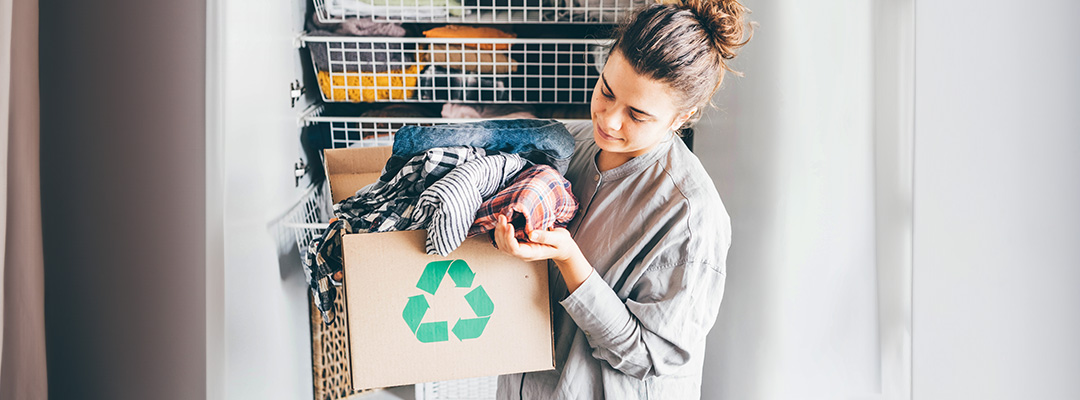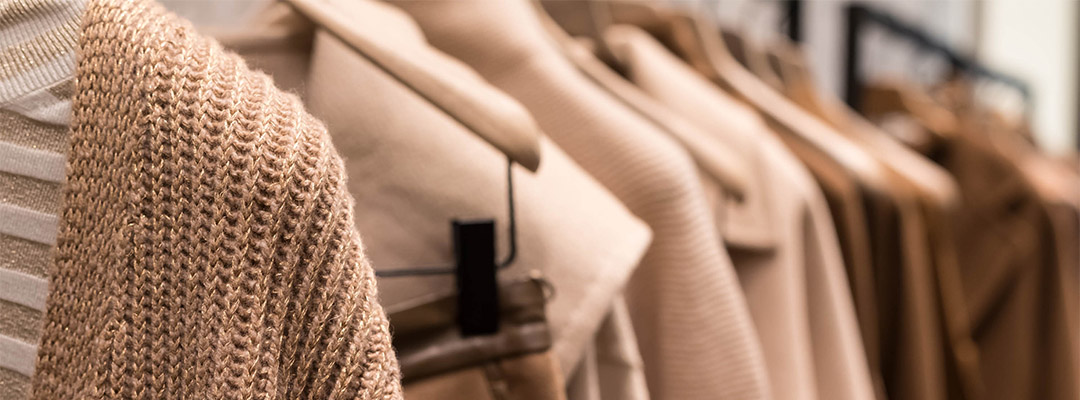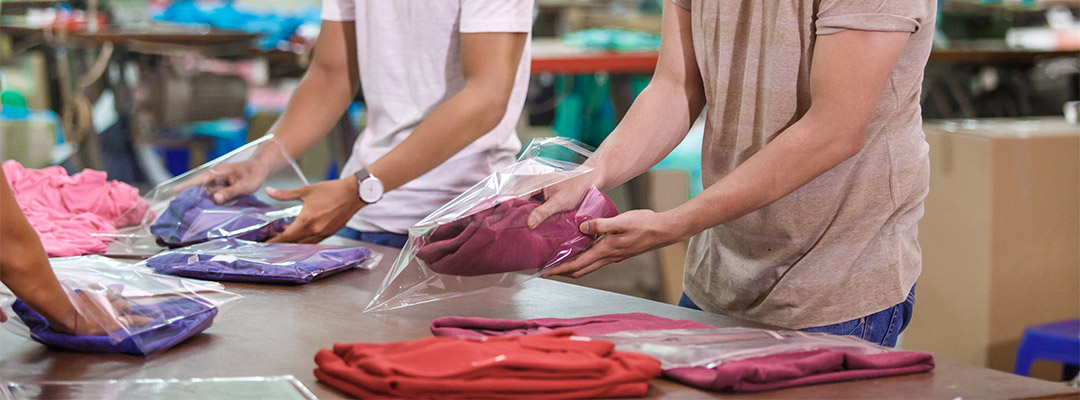Grow your business with the Discover newsletter
Logistics advice & insights straight to your inbox
Subscribe now
But first, let’s take a look at the industry as a whole. Business is booming; fashion is the largest e-commerce market in the world1, and is forecast to hit a valuation of US$1 trillion by 20242. According to 2PM3, 13 of the top 20 direct-to-consumer brands are in the fashion and apparel industry – a remarkable fact.
Globalization has been a rocket underneath the sector’s cross-border growth. China, unsurprisingly, is the world’s biggest exporter of clothes4 – both in terms of B2C and B2B – driven by demand in the US, the EU, Japan and the UK. The country’s long-standing manufacturing capabilities make it unrivalled in its ability to produce new designs at the rate the sector demands.
Yet, there’s change in the air. With consumers becoming more conscious of the impact of their purchasing habits on the environment, they’re increasingly prioritizing values over price. Amidst this, sustainable fashion brands are growing in popularity, exploring new innovations in materials and manufacturing processes.
Let’s take a closer look at this emerging era in fashion, and the other trends that could impact your business’s growth strategy.
It’s estimated that the global fashion industry produces more than 100 billion items of clothing per year(5) – double that of twenty years ago. This astronomical growth has been fuelled largely by consumers’ increasing appetite for cheap clothing. New trends can be copied from designers’ catwalks and replicated by mid-priced retailers in record time. But there’s a growing backlash against this “fast fashion”, as eco-conscious consumers and brands learn more about the impact on the environment.
In response, the “circular fashion” movement is gaining traction. This promotes the extending of products’ life cycle through recycling, upcycling, repair and resale. Rental platforms and second-hand marketplaces are giving businesses the opportunity to increase their sales.
Sustainability is gaining momentum within the luxury sector, too. Though circularity is somewhat at odds with an industry that markets its products as long-life, high-quality investments – the very antithesis of fast fashion – there is still a growing awareness of improvements that can be made along the supply chain. As Millennial and Gen Z shoppers lean towards socially conscious businesses, some luxury brands are reassessing their environmental practices. In 2021, Louis Vuitton and Cartier launched Aura – the world’s first global luxury blockchain – where consumers can track the entire lifecycle of a product by scanning its label.
Amidst volatile global economies and record-high inflation, it’s no surprise that consumers are reducing their spending on non-essential goods like fashion. In contrast, the luxury goods market remains strong, with the wealthiest buyers typically more insulated from the effects of hyperinflation. McKinsey(6) forecasts the luxury sector will grow between 5-10% this year, driven by demand from China and the US.
Consumers’ prioritization of “quality over quantity” is also driving the growth. Data from brand advocacy platform Mention Me7 shows that whilst in Q1 2023, sales within the fashion industry fell by 2% YoY, the Average Order Value actually increased by 8%. Fashion brands which demonstrate quality and craftmanship will be in a strong position to attract these buyers.
A combination of the above two trends – sustainability concerns and economic challenges – is changing the way people shop for fashion. McKinsey’s annual deep dive into the sector, The State of Fashion 2023(8), noted that consumers’ financial circumstances will lead them to “seek out bargains, increasing the demand for resale, rental, and off-price [sale] products.”
The key is to constantly monitor your target customers’ behaviors – looking at how and where they like to shop – and adapting accordingly. Though direct-to-consumer models are often a priority for brands, diversifying your sales channels for current trends – such as those mentioned above – will help you stay relevant and achieve growth.
Consumers’ expectations of luxury retail is particularly high, and new advances in AI technology is allowing brands within the sector to deliver more immersive, personalized and memorable experiences. Gucci, for example, uses AI to amplify its brand storytelling, moving online advisors away from traditional customer service response templates, and reducing the time it takes to onboard new team members on the brand voice, history and products.
Armani’s “Face Maestro” service combines expert make-up artists and AI to create personalized recommendations for customers. Users upload a selfie to receive a list of products to create a perfect look.
Meanwhile, Valentino has introduced virtual try-on technology for its ready-to-wear collections, so customers can visualise how a garment will look on them through their smartphones prior to making a purchase.
As we move into 2024, we expect luxury fashion brands to continue investing in AI, steering the sector into an exciting new experiential era.
Insights & best practices to help your business own the runway.

The global second-hand apparel market is set to double by 2027 – and is growing 3x faster than the apparel market overall9. As consumers become more sustainably-minded, brands with a considered approach to the lifecycle of their clothes will be favored.
Every year, millions of tons of used and damaged clothes end up in landfills. But there is a better way for fashion brands to process product returns. A reverse logistics strategy promotes the extending of products’ lifecycle via the “4 Rs”: recycling, repurposing, repairing and reselling.
Tips for your reverse logistics strategy:

The textile sector is responsible for 6% of global greenhouse-gas emissions, whilst the dyes used in manufacturing cause one-fifth of industrial water pollution12.
What your business can do

Consumers’ purchasing journeys often involves several channels, so brands will need to invest in an omnichannel strategy to ensure a seamless experience across all touchpoints.
Tips for your omnichannel strategy

Artificial Intelligence is transforming almost every industry, and fashion is no exception, where it is enabling the new and innovative experiences that the sector demands. Here’s a snapshot:
Reducing returns
Virtual try-on tools allow customers to visualize how clothes will look on them with a high level of realism. When online retailer Farfetch adopted a 3D try-on solution, its return rate decreased by 20%15.
Empowering luxury
Burberry uses image-recognition software to spot counterfeit goods, whilst in 2022, Dior launched an “influencer chatbot” which engaged with customers on WhatsApp and delivered them exclusive brand videos.
Enabling agile supply chains
Demand forecasting is a particularly challenging area for fashion brands, but AI can analyze large amounts of customer data to predict future demand, and then relay requirements to suppliers.

DHL’s Packing Guide for Fashion Apparel will talk you through the optimal packaging for different garments. Download here
Shipping internationally? Your need-to-knows
Choose an international shipping specialist. Stuart Hall, from online fashion retailer Matches, highlights the benefit of a logistics partner with a global network: “When we go to a new market, we will lean on specialists like DHL and the local DHL teams to really understand that market, and get underneath the skin of not just what the customer wants, but where the innovation is in that delivery market.”
1 – Statista, 2023
2 – Saffron Edge, November 2023
3 – 2PM, accessed November 2023
7 – Mention Me
9 – thredUP Resale Report, 2023
10 – thredUP
11 – H&M
13 – Pangaia
14 – Bluesign
15 – Medium, June 2026